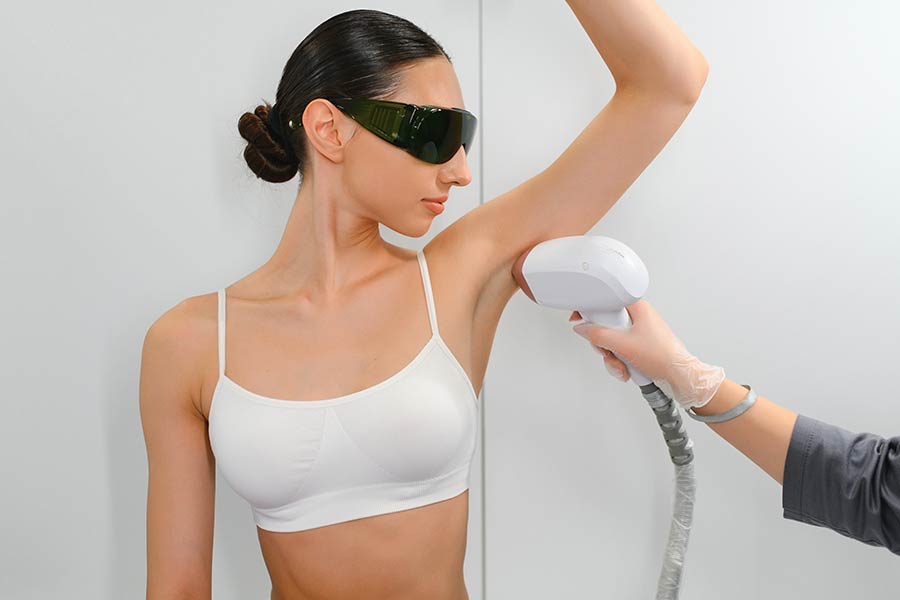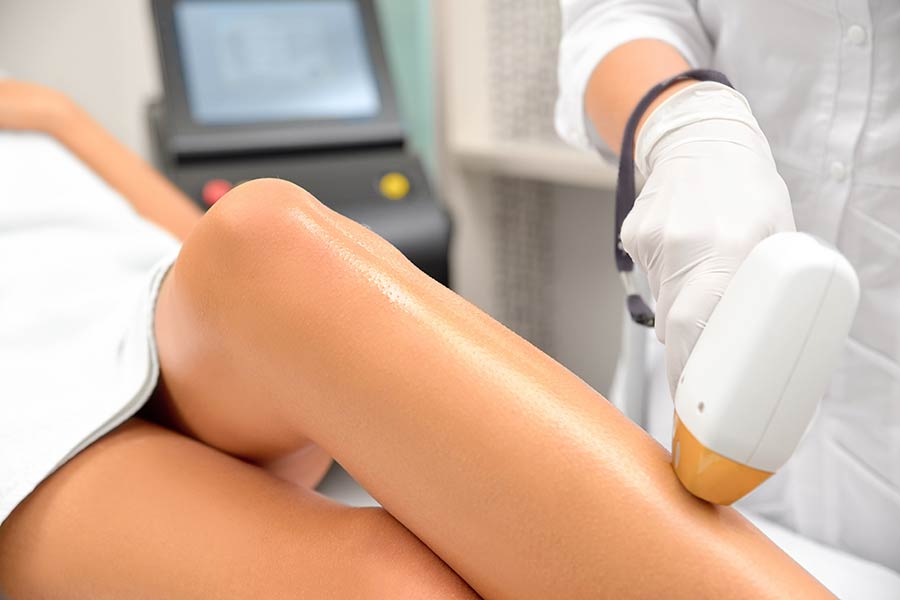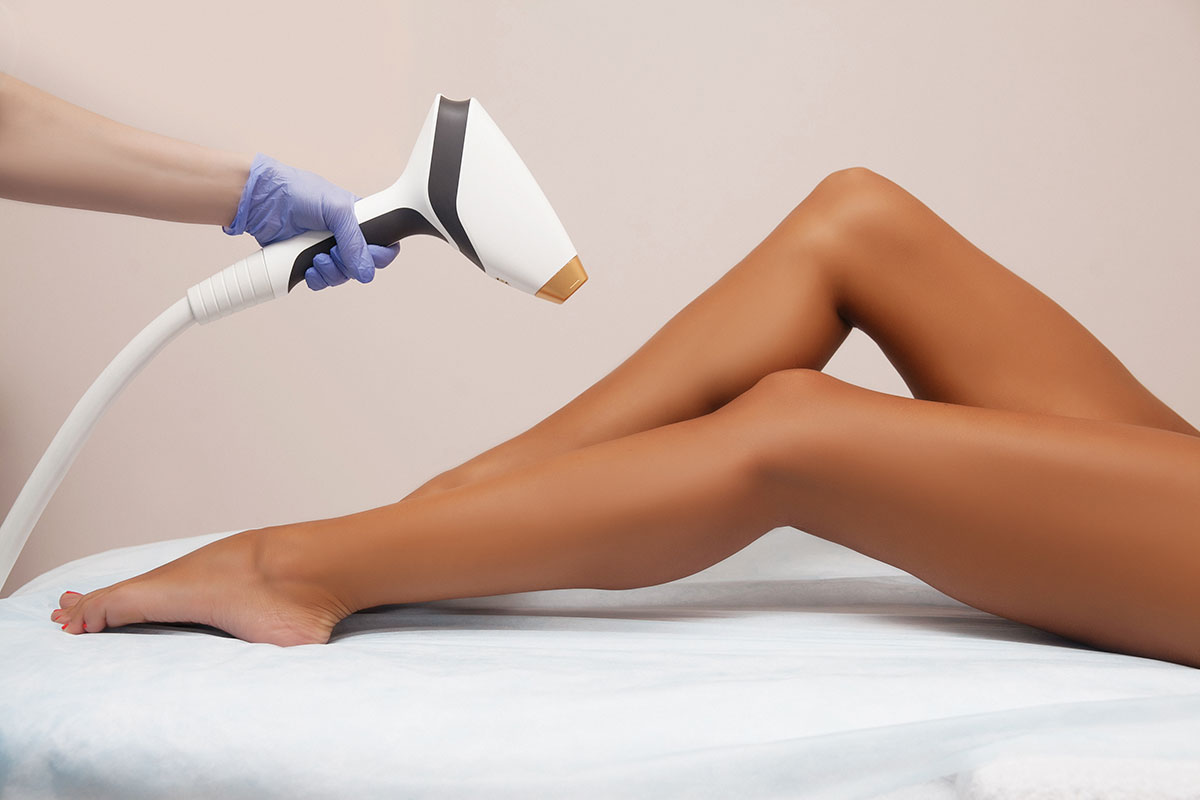Nearly 80% of folks seeking smoother skin are zapping away hair with lasers, but what's the buzz on the flip side? Yep, we're talking laser hair removal side effects. It's like that double-edged sword; you ditch the razor but might catch some heat (literally). We're diving deep into what your skin might go through post-laser. Think redness, a bit of discomfort, and sometimes, the sneaky appearance of ingrown hairs. But don't sweat it! Most of these side effects are more like minor guests at a party - they show up uninvited but don't stick around for too long. Let's unwrap this package together and see what's inside beyond the promise of silky-smooth skin.
Key Takeaways
- Laser hair removal is a popular method for reducing unwanted hair, but it's important to be aware of both common and rare side effects.
- Side effects like redness, irritation, and temporary pigment changes are common but usually mild and short-lived.
- More serious risks, such as burns or permanent pigment changes, are rare but can occur, especially if pre-treatment guidelines aren't followed or if the procedure is done by an inexperienced professional.
- Factors such as skin type, hair color, and adherence to pre-treatment and post-treatment care can influence the likelihood and severity of side effects.
- Taking proper care before and after treatment, such as avoiding sun exposure and following the professional's care instructions, can help minimize side effects and improve the overall outcome.
- Choosing the right professional for laser hair removal is crucial; look for someone with experience, proper credentials, and a good track record to reduce risks and ensure the best results.
Understanding Laser Hair Removal
Process Overview
Laser hair removal works by targeting hair follicles with intense light. This light turns into heat, damaging the follicle and hindering future hair growth. A typical session goes like this: first, the area is cleaned. Then, a cooling gel might be applied. The laser device is adjusted based on your hair's color, thickness, and location, as well as your skin color.
It usually takes more than one visit to see the best results. This is because hair grows in cycles, and the laser only affects actively growing hairs. So, multiple sessions ensure that all hair follicles are targeted over time.
Technology Types
Two common lasers for removing hair are Alexandrite and Nd:YAG. Alexandrite lasers work fast and are great for lighter skin, while Nd:YAG lasers are better for darker skin tones. This shows how different technologies suit various skin types.
Laser technology has evolved a lot. Newer machines can safely treat a wider range of skin types with fewer risks of side effects. This evolution means treatments are not only safer but also more effective than before.
Ideal Candidates
The perfect candidates for laser hair removal have dark hair and light skin because the laser targets the pigment in the hair. However, advances in technology mean it's now more accessible to those with darker skin too.
Having realistic expectations is crucial. Not everyone will get completely permanent results, but many see a significant reduction in hair growth that lasts a long time.
Pregnant women or individuals on certain medications should avoid this treatment due to potential risks or side effects that can occur.
Common Side Effects
Skin Irritation
Redness
Redness is a common side effect of laser hair removal. It looks like a mild sunburn. This usually fades within a few hours to days. To soothe red skin, apply a cool compress or moisturizer. If redness persists for more than a week, contact your provider.
Swelling
Swelling is another temporary reaction to the treatment. It's normal and shows your skin is responding. Use ice packs to help reduce swelling. It should go down within a few days. If it doesn't, reach out to your doctor.
Pigmentation Changes
Hyperpigmentation
Hyperpigmentation means the skin gets darker after treatment. It's more common in people with darker skin tones. To prevent this, avoid sun exposure before your sessions. Sunscreen is also a good idea if you must be outside.
Hypopigmentation
Hypopigmentation is when treated areas become lighter than the surrounding skin. It's less common but can happen, especially in those with dark skin. Before starting treatments, talk to a specialist about your risk of hypopigmentation.
Rare but Serious Risks
Skin Burns
Laser hair removal can sometimes lead to skin burns. This usually happens if the laser settings are too high for your skin type. It's crucial to pick a technician with lots of experience. They know how to adjust the settings just right.
If you do get a burn, it's important to treat it right away. Cool the area gently and keep it clean. See a doctor if it looks bad or doesn't get better.
Scarring
Though not common, scarring can happen after laser hair removal. This is why following aftercare instructions is so key. They help your skin heal properly and reduce the risk of scars.
If you notice anything odd about how your skin is healing, don't wait. Go see a doctor. They can help make sure your skin heals nicely.
Eye Injury
The lasers used in hair removal are very powerful. Without proper eye protection, they could hurt your eyes. That's why both you and the technician must wear special glasses during the procedure.
It's also up to the technician to make sure everyone stays safe. They should always check that everyone has their protective glasses on before starting.
Factors Influencing Side Effects
Skin Type
Different skin types react uniquely to laser hair removal. The Fitzpatrick Scale is a key tool in this regard. It classifies skin by its reaction to sunlight and susceptibility to sunburn. This scale helps predict how your skin might respond to laser treatment.
Darker skin types may experience more side effects due to the laser's difficulty distinguishing between hair and skin pigment. Lighter skin types usually have fewer issues. A personalized consultation can determine the most suitable laser option, minimizing risks.
Hair Color
Laser hair removal technology targets the pigment in hair, making it most effective on dark hair. Blonde, red, or grey hair lacks sufficient pigment for the laser to detect easily, posing challenges.
For those with less pigmented hair, alternatives or newer technologies may offer solutions. These advancements aim to make laser hair removal accessible and effective for a wider range of hair colors.
Technician Experience
The skill level of the technician plays a crucial role in minimizing side effects. An experienced technician can adjust treatments based on individual needs, reducing risks.
When choosing a technician, ask about their training, certification, and experience specifically with laser hair removal. Reviewing before-and-after photos of previous clients provides insight into their expertise and what you might expect from your treatment.
Pre-Treatment Preparation
Consultation Importance
Before starting laser hair removal, a consultation is key. It helps set clear goals and understand the risks. During this meeting, professionals evaluate your skin and hair type. They tailor a treatment plan just for you.
It's crucial to ask questions about the procedure. Find out what happens during and after sessions. This knowledge prepares you mentally and physically.
Skin Care Regimen
Adjusting your skincare routine is vital before laser treatments. Use gentle, non-irritating products to avoid complications. Harsh chemicals can harm your skin.
Experts warn against using certain acids and retinoids before treatment. These can make your skin more sensitive to the laser. Stick to mild cleansers and moisturizers instead.
Avoiding Sun Exposure
Avoiding sun exposure is critical before and after laser hair removal. The sun can increase side effects like irritation or discoloration.
Wear broad-spectrum sunscreen every day, even when it's cloudy. Consider scheduling treatments in fall or winter. These months have less intense sunlight, reducing risks.
Managing Immediate Side Effects
Cooling Gels
Cooling gels play a crucial role during laser hair removal. They protect the skin by forming a barrier. This barrier helps in reducing discomfort and prevents thermal injury. Technicians often apply cooling gel before the procedure begins.
After treatment, it's wise to continue using cooling gels. They help in soothing the skin. The coolness of the gel provides immediate relief from any irritation.
Over-the-Counter Creams
For those experiencing discomfort or inflammation post-treatment, over-the-counter creams can be helpful. Look for creams that are designed to calm and soothe the skin. However, it's important to avoid medicated creams unless recommended by a professional.
If you have sensitive skin, opt for hypoallergenic options. These products are less likely to cause further irritation.
Home Remedies
etimes, simple home remedies can ease mild side effects from laser hair removal. Aloe vera is known for its soothing properties. It can provide relief to irritated skin. Cool compresses can also reduce swelling and redness.
Be cautious with home remedies though. Avoid anything that might irritate your skin further. If you experience severe reactions, it's best to consult a professional immediately.
Long-Term Care and Mitigation
Moisturizing Practices
After addressing immediate side effects, it's crucial to focus on long-term skin care. Keeping the laser-treated area moisturized helps in healing. Use fragrance-free, gentle moisturizers. They soothe the skin without causing irritation.
Avoid heavy creams that might clog pores. These can lead to breakouts or worsen side effects. Instead, opt for lightweight options that allow the skin to breathe and recover.
Sunscreen Use
Sun protection is vital after laser hair removal. The treated skin becomes more sensitive to sunlight, increasing the risk of hyperpigmentation. It's essential to use sunscreen with SPF 30 or higher on these areas.
Reapply sunscreen every two hours when outdoors, even on cloudy days. This practice not only prevents dark spots but also protects against sunburns and long-term damage.
Follow-up Sessions
Laser hair removal usually requires multiple sessions for best results. This is because hair grows in different stages, and each session targets new growth.
Sessions are typically spaced four to six weeks apart. Adhering to this schedule ensures that all hair follicles are effectively treated over time. Patience and consistency are key. They lead to smoother, longer-lasting outcomes.
When to Seek Medical Advice
Persistent Side Effects
If you notice side effects from laser hair removal that don't go away, it's time to act. Persistent side effects can signal that something isn't right. You might need a different approach or even stop treatment altogether. Don't wait too long to speak up.
Talk to the technician or a dermatologist if issues linger. They can adjust your treatment plan. This might mean changing the laser settings or how often you get treatments. It's crucial to report any ongoing problems quickly. Early action can prevent worse issues later.
Signs of Infection
After laser hair removal, watch for signs of infection. These include more pain, redness, and pus in the treated area. If you see these signs, get medical help right away.
Keeping the area clean is very important. This helps prevent infections from starting. Remember, infections can make things much worse and delay your recovery.
Unusual Symptoms
etimes, people have symptoms after treatment that they shouldn't. For example, blistering or severe pain is not normal. If this happens to you, tell someone right away.
Unusual symptoms need quick attention to stop bigger problems from happening. The sooner you act, the better it is for your health.
Choosing the Right Professional
Qualifications Check
Before deciding on a laser hair removal provider, it's crucial to check their qualifications. Look for certifications that prove they're trained to use laser equipment safely. Each state has its own rules about who can perform laser hair removal. Make sure the clinic and technician meet these requirements.
Choosing a reputable provider is essential. A good reputation means they follow safety protocols and have satisfied clients. This reduces the risk of side effects.
Consultation Questions
When you meet with a potential provider, come prepared with questions. Ask about the type of laser they use and how long they've been performing treatments. It's important to know if their experience matches your needs.
Clarify how many sessions you might need and the total cost upfront. This helps avoid surprises later on.
Don't forget to ask about handling side effects. Knowing what steps to take if you experience discomfort or other issues is important.
Client Reviews
Reading reviews from past clients can give you insight into a clinic's service quality. Look for feedback on both the results and how they managed any side effects. Reviews from people with similar skin and hair types as yours are especially helpful.
Consider both positive and negative reviews for a balanced view. This will help you make an informed decision.
Summary
Laser hair removal can be a game-changer for your skin and confidence, but it's not without its side effects. You've seen the common ones, from redness to itching, and the rare serious risks that make you think twice. Knowing what factors influence these effects and how to prep and care for your skin makes all the difference. Choosing the right professional is key—you want someone who knows their lasers like the back of their hand. It's about making an informed choice, so your journey to smoother skin is as safe as it is successful.
Now you're armed with knowledge, ready to weigh the pros and cons. If laser hair removal sounds right for you, don't wait. Start researching professionals in your area, ask all the questions you've got, and take that first step towards saying goodbye to unwanted hair. Remember, it's your skin, your choice—make it count.
Frequently Asked Questions
What are the common side effects of laser hair removal?
You might notice redness and swelling, kind of like a sunburn, right after your session. These are pretty standard and usually chill out within a few hours to a few days.
Can laser hair removal have serious risks?
Yes, but it's rare. Think of it as hitting a bad note in a perfect song - not expected but can happen. Serious stuff includes burns or scars if not done right. That's why picking an experienced pro is key.
How do different factors affect laser hair removal side effects?
Your skin type, hair color, and even the laser's settings play a role. It's like tuning an instrument for the best sound; everything needs to be in harmony to minimize side effects.
What should I do before my laser hair removal appointment?
Avoid tanning and plucking. Think of your skin as a canvas - you want it in its most natural state for the best results.
How can I manage side effects right after treatment?
Ice packs are your new best friend. They'll help calm down any redness or swelling. Also, keep that sunscreen handy to protect your skin.
What does long-term care involve after laser hair removal?
Keep it simple: moisturize and use sunscreen. Your skin will thank you by staying smooth and happy.
When should I get medical advice after laser hair removal?
If you're feeling more than just the "ouch" of sunburn—like blistering or signs of infection—it's time to call the doc. Better safe than sorry!
Why is choosing the right professional important for laser hair removal?
Imagine letting someone who can't drive take the wheel of your car; you wouldn't, right? The same goes for laser hair removal - expertise matters to avoid those rare but serious risks.












